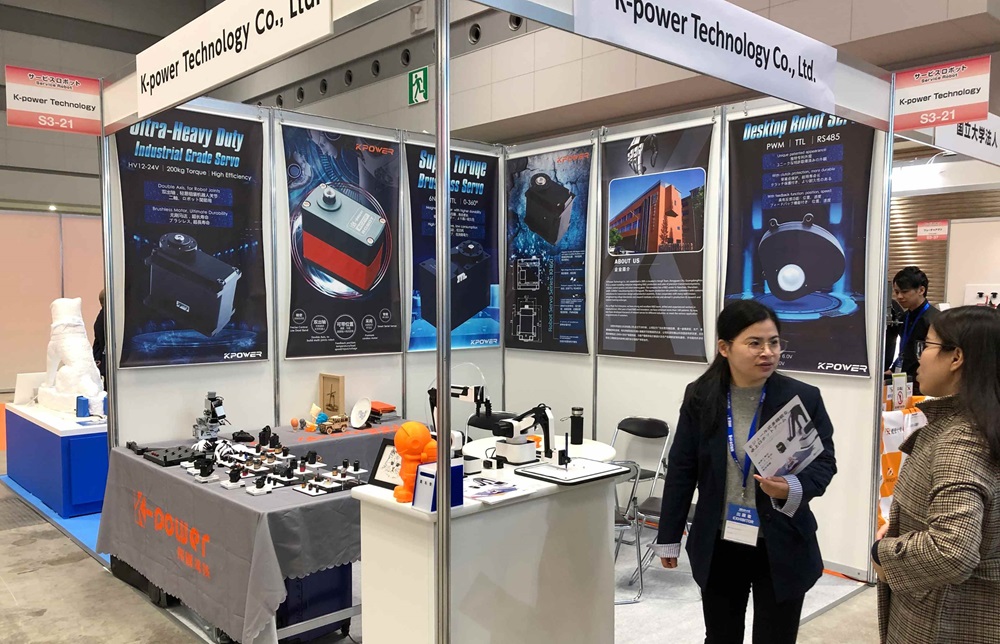Unveiling the Power Play: Brushless DC Motors vs. Servo Motors
In the realm of modern engineering and robotics, electric motors are the unsung heroes powering everything from tiny drones to massive industrial machinery. Among the many types available, two often stand out due to their impressive performance and versatility: brushless DC motors (often called BLDC motors) and servo motors. Although they might seem similar at a glance, these two motor types serve distinct roles, operate on different principles, and cater to different needs. Understanding their nuances can open up a world of possibilities—whether you're designing a sleek drone, an autonomous robot, or an intricate CNC machine.

The Basics: What Are These Motors?
A brushless DC motor is a type of electric motor that uses electronic commutation rather than brushes and slip rings. It consists of a rotor with permanent magnets and a stator equipped with coils that are energized by electronic controllers. This design makes BLDC motors highly efficient, reliable, and maintenance-free—ideal for applications demanding durability and low upkeep.
A servo motor, on the other hand, is more of a broad term that refers to a motor paired with a controller and feedback device, often used for precise position, velocity, or torque control. Servo motors can be AC or DC, and include a range of types such as brushed DC, brushless DC, and AC servos. In essence, a servo motor is an entire system—comprising the motor, sensors, and control circuitry—working in harmony to achieve precise movement.
Operation and Control
BLDC motors operate via electronic commutation. When powered, they generate a rotating magnetic field in the stator which interacts with the permanent magnets in the rotor, causing it to spin. Their speed and torque are controlled by adjusting the voltage and current supplied through sophisticated electronic controllers. The absence of brushes means reduced wear and tear, leading to longer lifespan and less maintenance—a big advantage in demanding environments.
Servo motors, conversely, are part of a closed-loop system. They typically incorporate an encoder or resolver that continuously feeds back the motor's position or speed to the controller. The controller then compares the actual position with the desired command and adjusts the power accordingly, ensuring high precision. This feedback mechanism makes servo motors exceptionally capable of accurate, repeatable movements, perfect for robotics and automated manufacturing.
Key Attributes at a Glance:
Aspect Brushless DC Motor Servo Motor Design Rotor with permanent magnets, stator with coils, electronic commutation Motor + feedback device + controller Control Method Electronic commutation (speed/torque control) Closed-loop control (position, speed, torque) Feedback Typically lacks built-in sensor (sensorless or with Hall sensors) Usually includes sensors (encoders, resolvers) Application Focus High efficiency, durability, high-speed operation Precision, control accuracy, repeatability
Performance and Efficiency
BLDC motors are celebrated for their efficiency—often reaching 85-90%. Their ability to operate at high speeds with minimal heat loss makes them popular in high-demand applications like electric vehicles and high-speed fans. They also excel in environments where durability and low maintenance are paramount.
Servo motors, depending on design and control, can deliver extremely precise movements and hold positions with just a fraction of a millimeter of accuracy. They are typically optimized for low to medium speed applications but excel in torque control and position accuracy. In many cases, they are preferred in robotics, CNC machinery, and antenna positioning where precise, repeatable movement is non-negotiable.
Applications Show the Differences
The application landscape is diverse, yet the choice often comes down to what you need most. For example, a drone requiring rapid, efficient flight might lean heavily on BLDC motors due to their high speed and low maintenance. In contrast, a robotic arm assembling tiny components with exacting positional requirements will likely depend on the precise control of a servo motor.
Cost and Maintenance Considerations
BLDC motors, thanks to their simple mechanical design, generally cost less over their lifetime and need less maintenance. Since they lack brushes that wear out, they tend to last longer and require fewer replacements.
Servo systems, while costlier upfront due to the integrated control and feedback systems, offer unmatched control precision—especially important in applications where exact positioning impacts quality and product consistency.
The Future of Electric Movement
Both brushless DC motors and servo motors are at the forefront of technological advances. As electronics become more sophisticated and miniaturization continues, their capabilities grow exponentially. Innovations in sensorless control for BLDC motors, and smarter, more compact sensors for servos, mean even more efficient, reliable, and precise machines are on the horizon.
In the next segment, we’ll explore real-life applications, compare specific technical specifications, and help you decide which motor suits your project best. Stay tuned for a deeper dive into the differences that matter on the assembly line and in the creative chaos of robotics design.
Kpower has delivered professional drive system solutions to over 500 enterprise clients globally with products covering various fields such as Smart Home Systems, Automatic Electronics, Robotics, Precision Agriculture, Drones, and Industrial Automation.




































